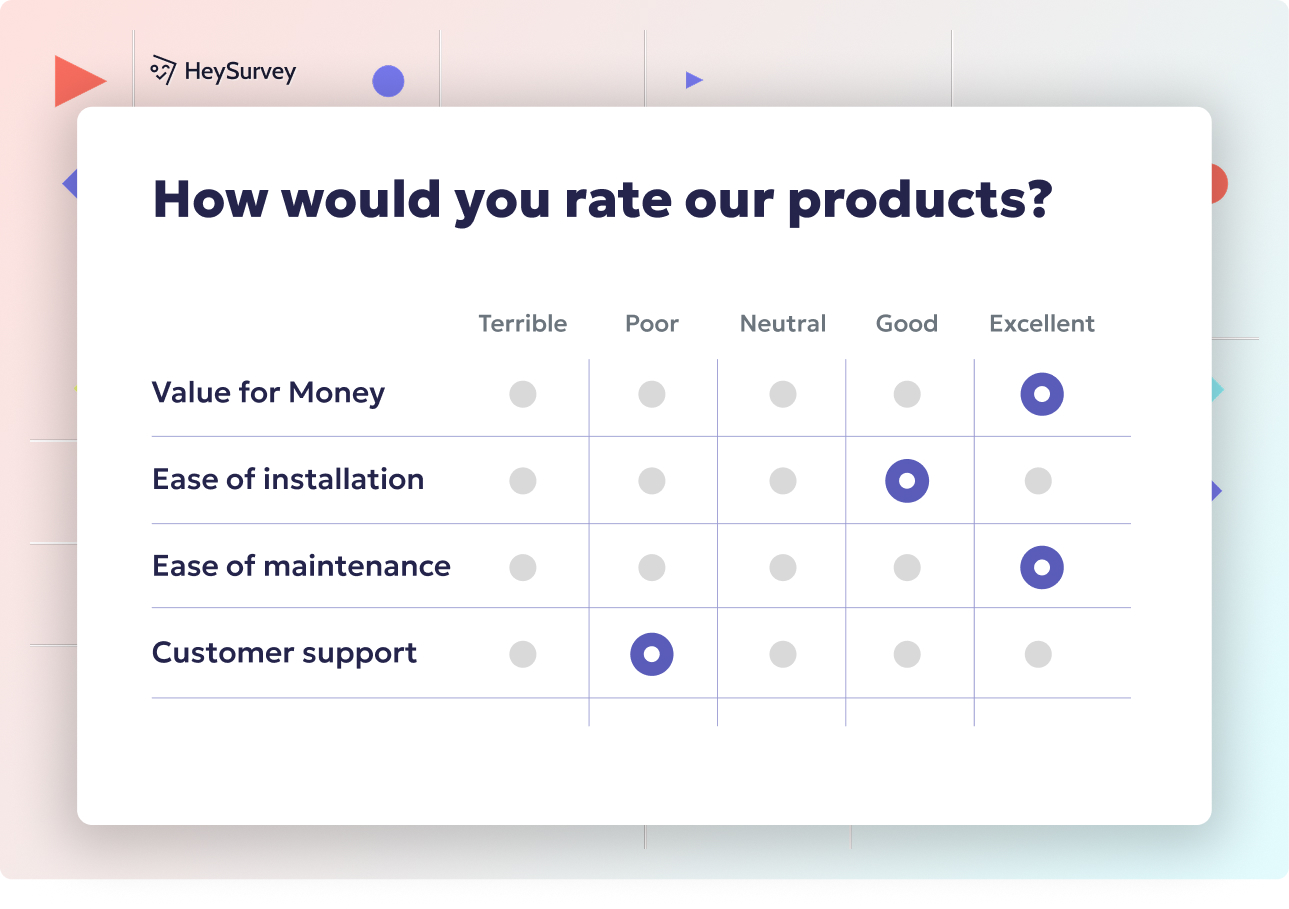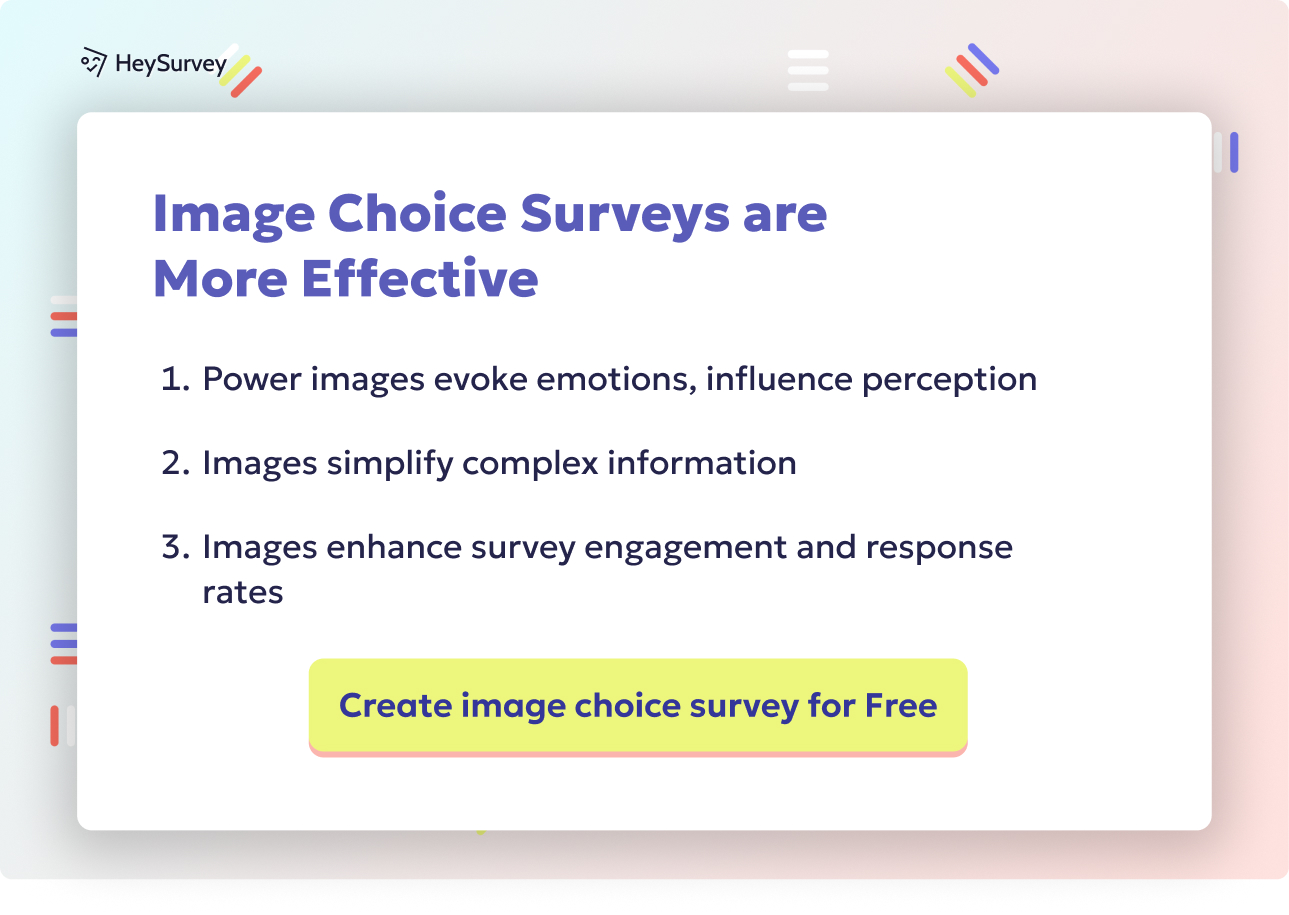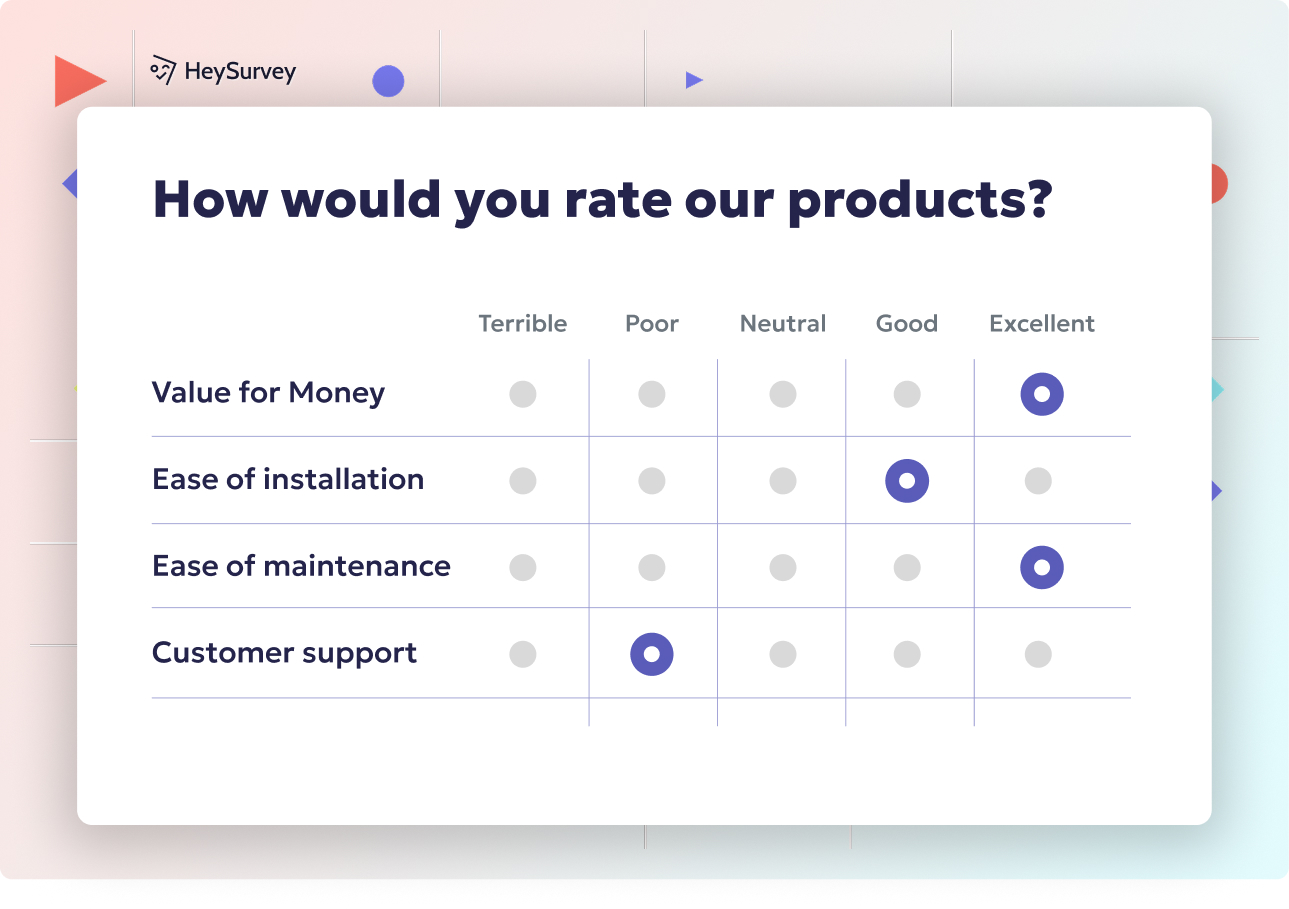29 Survey Questions for Teachers to Boost Success
Explore 25+ insightful survey questions for teachers to boost engagement, professional growth, and well-being in K-12 schools effectively.
Teaching is at the heart of every thriving school, yet the voices of educators are often the most overlooked. Deploying a teacher feedback survey isn’t just about collecting opinions—it’s about unlocking the insights that transform classrooms, boost staff morale, and cultivate a positive school environment. Whether it’s the start of the year, after a round of professional development, or during a mid-semester pulse check, a well-timed survey can reveal priceless data to improve classroom outcomes. Dive into the world of teacher surveys and discover how strategic questions can spark actionable change.
Teacher Job Satisfaction Survey
Understanding Job Satisfaction Surveys
A teacher retention survey is more than a simple chat about likes and dislikes; it’s a structured questionnaire that helps school leaders measure the happiness and engagement of their teaching team. When educators feel heard and supported, they’re more likely to stay, thrive, and contribute to a stronger school culture. A robust job satisfaction survey is a cornerstone for human resource planning, designed to spot trends that impact morale and teacher turnover.
Why & When to Use
The best time to launch an educator morale questionnaire is twice per year—once early on to set a baseline, and again after major changes, such as new staffing policies or shifts in school leadership. This regular rhythm helps leaders:
- Track how changes affect the teaching staff
- Highlight career growth opportunities
- Detect bubbling dissatisfaction before it erupts into resignations
Deploying these surveys after big policy rollouts is a smart move. Teachers get a chance to react, and school administrators can quickly pivot as needed.
Sample Questions
Here are five sample questions for your next teacher job satisfaction survey:
How satisfied are you with your current teaching assignment and grade level?
Do you feel your contributions are valued by school leadership?
How likely are you to remain at this school for the next three years?
Which factors most influence your job satisfaction (select all that apply)?
On a scale of 1–10, how supported do you feel in meeting professional goals?
Maximizing Results
To get the best insights, keep surveys brief and simple. Avoid complex jargon—make each question count. And always remember: the magic isn’t in the questions, but in what you do with the answers.
Only 15% of teachers are extremely or very satisfied with their salary, highlighting significant dissatisfaction with compensation. (pewresearch.org)

Creating your teacher survey with HeySurvey is quick and easy—even if you’re totally new to it! Follow these 3 simple steps, and you’ll have your survey ready to collect valuable feedback in no time.
Step 1: Create a New Survey
- Head over to HeySurvey and click “Create New Survey.”
- Choose to start from a template (perfect for teacher surveys!) or create an empty survey to customize everything from scratch.
- Give your survey a name that helps you recognize it later, like “Teacher Job Satisfaction Survey.”
Step 2: Add Your Questions
- Use the Add Question button to start stacking your questions.
- Pick the question type that fits best—multiple choice, scale, text, or others—and type in your teacher survey questions.
- Customize each question by marking if it’s required, adding images, or giving further instructions.
- For more tailored surveys, try branching: make certain questions appear only if a teacher gives a specific answer (great for deeper insights!).
Step 3: Publish Your Survey
- Preview your survey to see exactly how teachers will experience it.
- Once you’re happy, hit Publish to generate a shareable link.
- Share the link through email, your school website, or any communication channel you prefer.
Bonus Steps to Level Up Your Survey
Apply Branding:
- Add your school logo and customize colors to make the survey feel like your own. This builds trust and engagement.
Define Settings:
- Set start and end dates to control when teachers can respond.
- Limit the number of responses if needed, and decide if you want to redirect respondents to a thank-you page or external site after they finish.
Skip Logic & Branching:
- Use branching to customize the path through your survey based on teachers’ answers—perfect for when you want to ask follow-up questions only if relevant.
Ready to start? Click the button below to open a ready-made teacher survey template and begin customizing!
Professional Development Needs & Preferences Survey
Why Professional Development Surveys Matter
A teacher professional development survey aligns training with what educators genuinely need, instead of what sounds good on paper. When schools listen to teachers’ skill gaps and preferences, professional growth becomes meaningful—and clearly felt in student learning. These surveys help tailor PD calendars to topics that light up classrooms, not just tick a compliance box.
Why & When to Use
It’s wise to run a PD needs assessment before drafting your annual training calendar or midyear when you notice instructional trends. This insight supports:
- Personalized professional learning paths
- Smarter allocation of PD resources
- Rapid response to new instructional challenges
By listening to teachers, administrators can skip one-size-fits-all boredom and deliver learning that truly matters.
Sample Questions
Looking for inspiration? Try these questions in your next teacher professional development survey:
Which instructional strategies would you most like training on next semester?
Rank the PD delivery formats you prefer (in-person, webinar, coaching, micro-course).
How relevant was the most recent PD session to your classroom challenges?
What barriers prevent you from applying PD learning?
List one PD topic that would immediately impact student achievement.
Tips for Smarter Surveys
Make the results actionable. Don’t just observe trends—use them to build a more effective PD program that inspires teachers to try new tools and methods right away. Survey feedback can transform PD from a mandatory meeting to an energizing experience.
A 2015 survey revealed that 71% of teachers prioritize professional development tailored to their specific needs, highlighting a strong demand for personalized learning opportunities. (marketbrief.edweek.org)
Classroom Resources & Support Survey
Uncovering Resource Gaps
A teacher resource survey unlocks the real story behind what teachers wish for, what they lack, and where school dollars will do the most good. Teachers face daily struggles when resources—like textbooks, laptops, or even marker sets—run dry. When these gaps are uncovered, administrators can advocate for better materials and make grant applications shine.
Why & When to Use
Send out a school supply questionnaire ahead of budget decision deadlines or just before submitting those big grant proposals. These are prime moments to gather detailed input so spending aligns with actual needs. The payoff?
- Prioritized investment in high-impact areas
- Fewer surprise shortages during the semester
- Confidence that funding translates into real classroom improvement
Teachers hold the answers to smarter spending—they know what’s missing.
Sample Questions
Start your own ed-tech needs survey using questions like these:
Do you have adequate instructional materials for each core subject?
Which classroom technologies are missing or need upgrading?
How often do supply shortages affect lesson plans?
Rate the responsiveness of tech support when issues arise.
What single resource would most improve student engagement?
Making It Work
Be prepared for candid responses—teachers will highlight gaps you hadn’t noticed. Responding with swift action, even for small requests, builds trust and proves that teacher voices really matter. After all, a happy teacher is a well-equipped teacher!
Student Engagement & Classroom Management Survey
Why Measure Student Engagement?
Nothing transforms a classroom more than high energy and engaged students. A student engagement teacher survey goes straight to the source: the teachers who shape those daily experiences. When teachers reflect on what works (and what doesn’t), leaders can fine-tune behavior policies and support systems for better results.
Why & When to Use
Running a classroom management feedback survey each quarter helps capture changes as the school year progresses. This keeps school discipline strategies relevant and effective. Surveys help with:
- Designing behavior interventions that teachers actually need
- Spotting waves of disruptive behavior before they crest
- Providing timely coaching for teachers facing frequent challenges
By asking for regular feedback, schools avoid flying blind into new discipline issues.
Sample Questions
Consider these questions to sharpen your student engagement insights:
How engaged are your students during independent work time?
Which classroom management strategies are most successful for you?
How often do disruptive behaviors interrupt instructional time?
What support do you need to increase on-task behavior?
Rate the effectiveness of current school-wide behavior policies.
Turning Insights into Action
Let teachers know their feedback directly informs changes to behavior policies. This motivation triggers more participation in future surveys and a stronger partnership between teachers and leadership.
Teachers' perceptions of student engagement are significantly influenced by their teaching philosophies, with constructivist approaches correlating with higher engagement levels. (researchgate.net)
Curriculum & Instructional Practices Feedback Survey
The Power of Feedback on Curriculum
A curriculum feedback survey is a teacher’s golden ticket to influence what and how they teach. When teachers give honest feedback about curriculum pacing, clarity, and alignment with standards, administrators can make immediate improvements to instructional quality. This ensures every curriculum map is more than a binder on a shelf—it’s a living, breathing tool for classroom success.
Why & When to Use
The smartest time to gather curriculum insights is after wrapping up a major unit, at semester’s end, or during key times like textbook adoption cycles. This enables:
- Quick adjustments to pacing guides
- Stronger alignment with ever-changing state standards
- Real-time feedback loop to improve instructional planning
Teachers are closest to student needs, so their input cuts through theory to reveal what’s truly effective.
Sample Questions
Try adding these questions to your next instructional practice questionnaire:
How well does the current curriculum align with state standards?
Which units require more instructional time than allotted?
How culturally responsive is the instructional material?
What supplemental resources enhance curriculum delivery?
How often do you adapt lessons to meet diverse learner needs?
From Paper to Practice
Review responses as a team, then act fast. Offer mini-PD sessions or tweak curriculum documents based on input. Teachers who see their feedback used become champions for continued improvement.
Teacher Well-being & Work-Life Balance Survey
Why Survey Well-being and Balance
A teacher wellness survey dives into the beating heart of staff—their mental health, stress levels, and sense of balance. These surveys help school leaders catch burnout before it hits, lower absenteeism, and increase every teacher’s capacity to be at their best for students. The happier and healthier teachers are, the better for everyone!
Why & When to Use
Pulse-checks should happen quarterly, with added emphasis during high-stress times like testing seasons or report card crunch weeks. Early intervention is key to:
- Spotting patterns of chronic stress
- Addressing systemic barriers to work-life harmony
- Ensuring staff know their well-being really matters
The feedback here is both a safety net and a springboard for positive culture changes.
Sample Questions
Check in on staff using these educator burnout assessment queries:
How would you rate your current stress level related to work duties?
Do you have sufficient time for lesson planning during contract hours?
How effective are current school initiatives in supporting mental health?
What after-hours expectations impact your personal life most?
Which wellness resources would you use if provided by the district?
Moving Toward Wellness
Combine survey findings with resources—mental health services, wellness days, or even yoga classes. When teachers feel seen and supported, the benefits ripple through the entire school community.
Best Practices: Dos & Don’ts for Crafting Effective Teacher Surveys
Crafting the Perfect Survey
Designing a teacher questionnaire is both art and science. To make sure every response is meaningful (and you don’t just get a sea of “meh”), keep surveys sharp, clear, and quick to complete.
Dos
- Keep surveys short; 10–15 questions is the sweet spot
- Guarantee anonymity for honest feedback
- Test questions with a small group before going big
- Use a blend of scales (1–10, strongly agree/disagree) and a few open-ended prompts
- Close the loop by sharing results and action steps
Don’ts
- Don’t pack in too much educational jargon
- Don’t ignore what you hear—a black hole of feedback slashes morale
- Don’t make every answer “required,” or you’ll get rushed or fake data
- Don’t ask more than you’re willing to act on
- Don’t forget to thank teachers for their time and honesty
Keep It Simple—and Impactful
A well-crafted survey shows teachers you value their expertise and time. Each feedback loop—ask, act, and update—is a chance to build trust and celebrate progress.
Conclusion & Next Steps: Turning Teacher Feedback into Action
Great schools run on the power of teacher feedback surveys. By building action plans around job satisfaction, PD needs, resources, engagement, curriculum, and teacher well-being, schools foster a culture where everyone flourishes. The most important next step is transparent communication—show teachers how their input leads to better policies. Ready to boost morale and classroom outcomes? Download a free set of teacher survey questions or reach out for a custom consultation today. Stay curious, keep listening, and watch your school community thrive!
Related Teacher Survey Surveys

32 Teacher Perception Survey Questions for School Improvement
Explore 30 insightful teacher perception survey questions, covering school climate, PD needs, lea...

32 Survey Teacher Evaluation Questions for Effective Feedback
Discover 25+ survey teacher evaluation questions with sample items and expert tips for effective ...

32 Teacher Survey Questions: Types, Examples & Tips
Discover 45+ teacher survey questions with examples and tips to improve job satisfaction, PD, res...

